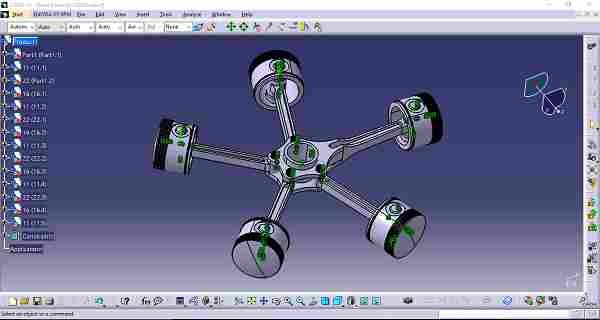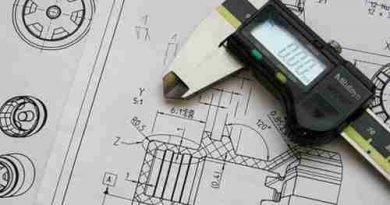CATIA Software – A 3D Modeling Software – Engineering 3D Design
What is CATIA?
CATIA (computer-aided three-dimensional interactive application) is a multi-platform CAD software developed by the French company Dassault Systèmes. It is a parametric and bi-directional software which is for computer-aided design (CAD), computer-aided manufacturing (CAM), computer-aided engineering (CAE), PLM and 3D modeling. It provides a wide range of applications for part design, mechanical assemblies, surfacing, tooling design etc.
CATIA was developed in 1977 by the French aircraft manufacturer Avions Marcel Dassault, to develop Dassault’s The Mirage Fighter Jet. After that it starts using in the fields of aerospace, automotive, shipbuilding, and other industries.
In several years, CATIA became the biggest 3D CAD modeling tool for many companies for designing aircrafts, submarines, automotive, etc. It enables engineers and designers to transform new ideas into great designs and products.
In recent year, Dassault Systèmes launched 3DExperience Platform and Marketplaces to connect with CATIA users, manufacturers and engineers.
Modules in CATIA:
Part Modelling: To create a 2D sketch in a sketcher and convert it into a 3D part design with the modelling.
Assembly Design: To assemble two or more number of components by following the degrees of freedom of the components and to develop a final product.
Drafting: To project the views of components on that sheet, assigned dimensions, geometrical tolerances, roughness parameters, etc. used in a drafting.
Wireframes: The wireframe construction elements aid in creating surfaces. They generally consist of lines, 3D curves, points, etc. which are used as substitute drawn in sketcher.
Surfacing: These are the geometrical features which do not have any thickness. They are used to create complex geometries which are typical to develop by using part design features.
Sheetmetal Part Design: Generative Sheetmetal Design allows users to design sheet metal parts as per their need between folded or unfolded part presentations.
Rendering: The Real Time Rendering allows users to define the material specifications to the part model and choose the specific material or colour you need to produce realistic renderings.
CATIA 3DExperience:
CATIA 3DExperience is the next version of CATIA V6. It has additional integration of other Dassault Systèmes Brands such as Simulia, Enovia and Delmia. CATIA 3DExperience offers to visualize models without having to install additional applications. It offers 3D modelling and simulation capabilities to improve the efficiency of all types of users. It incorporates Product Data Management (PDM) and Product Lifecycle Management (PLM) through the Dassault Systèmes brands. CATIA 3DExperience enables the next generation collaborative virtual designs including product design, mechanical design, shape design, system design and much more.
What is the current version CATIA?
The current version of CATIA is CATIA V6. This is the latest version of CATIA which provides users productive experience which improved user productivity and ease of use. Most of the companies also still using CATIA V5 for their work as the designers are compatible with the older version.
Applications of CATIA:
1. CATIA is very useful software in Mechanical Engineering, to create the 3D parts from 2D sketches and drawings for sheet metal, surfacing, composites parts. CATIA provides wide range of tooling design and advanced technology in mechanical engineering.
2. CATIA helps to create the Generative Shape Designs, surfacing parts, complex innovative shapes for industrial designs.
3. The Boeing Company is the biggest CATIA users. They used CATIA V3 and V5 for 777 and 787 series and PLM its software. The development of the Indian Light Combat Aircraft has used CATIA V5. CATIA is the best and very useful software in the Aerospace Industry.
4. Many automotive companies using CATIA, including BMW, Porsche, Audi, McLaren, Honda, TATA, etc. to design automobile bodies and develop automotive parts.
5. CATIA is very useful for shipbuilders. GD Electric Boat used CATIA V5 for United States Navy.





